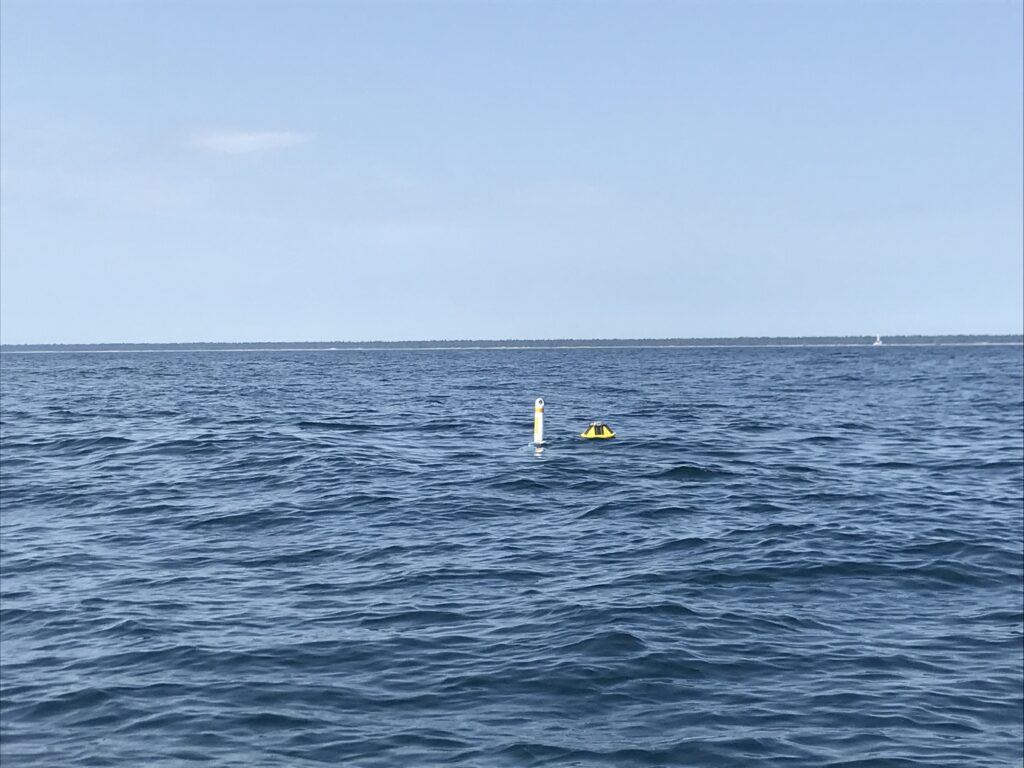
By Katie Rousseau, Smart Great Lakes Liaison
Two years ago, GLOS posted an article about the newest NOAA national marine sanctuary and its’ three spotter buoys. As you can imagine a lot can happen in two years, so we are catching up with Russ Green, Superintendent at the Wisconsin Shipwreck Coast National Marine Sanctuary (WSCNMS), to learn about how the communities within the sanctuary are influencing where the buoys are being moored today and how the sanctuary’s observation network is expanding.
The buoys in the WSCNMS are fairly new, yet they are getting attention. Russ says that from year one to year two, there was nearly a 70% increase in users. And GLOS confirms, based on Seagull data, that these buoys have been viewed over 11,000 times so far this deployment season. The real time wind, wave, and water temperature information from the buoys helps boaters, anglers and others plan for a safe day on the water.
With this attention, WSCNMS has been reaching out to local stakeholders to better understand how to make the buoys part of the Lake Michigan ecosystem by putting them in the right spot.
WSCNMS worked with the Great Lakes Sport Fishing Club in Ozaukee County to reposition one of the buoys. Russ had spoken at one of their meetings where he was able to hear a lot of real time feedback. Based on that feedback, the buoy was repositioned closer to a shipwreck.
“The fisherman all know where the shipwrecks are and they don’t want to snag on the shipwreck, so by putting the buoy closer to the shipwreck, the fisherman will be able to avoid snagging the weather buoy mooring,” says Green.

Another buoy at the northern end of the sanctuary was also repositioned based on a commercial fishing operation, Susie Q Fish Company. The buoy was originally in an area where the operation was trawling, so they asked if it could be moved further north. Overall, the sanctuary has tried to be really responsive to both recreational and commercial fishers to put the buoys in the best place possible.
Based on the success of the three smaller weather buoys, the sanctuary is expanding its observation network. WSCNMS has partnered with the School of Freshwater Sciences through a Fund for Lake Michigan grant to engineer and deploy a bigger, more traditional type of observing buoy. This bigger platform will allow the sanctuary area to acquire water quality and turbidity information. An outside webcam where people can see what the conditions are like topside will also be added.
“This new platform will include a current profiler and a temperature string, where a temperature node will be placed every 10 feet, so really fine grained observations,” says Green.
WSCNMS will also acquire a water quality sensor in partnership with the NOAA’s Great Lakes Environmental Research Lab. This larger platform is still being constructed and scheduled to be ready in spring of 2024.

Green says that one of the real strengths of the sanctuary is that we can bring a number of partners together to research and conduct scientific projects in this area of Lake Michigan, which is a good thing for Lake Michigan conservation.
For more information, contact Russ Green at russ.green@noaa.gov.